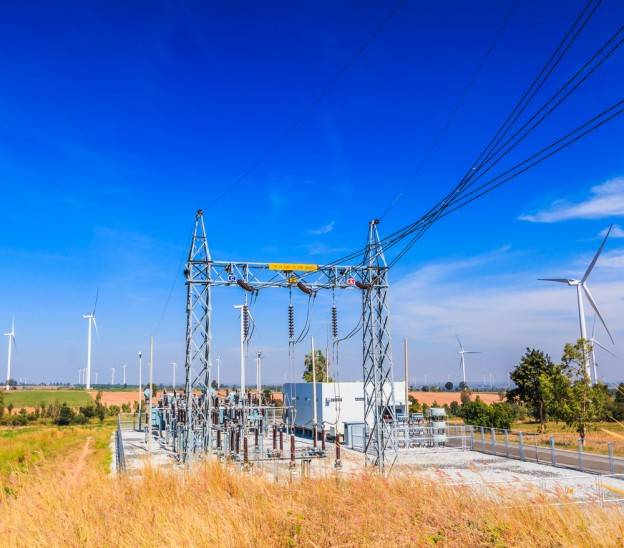In today’s modern electric power industry, transformer oil sampling and analysis has begun to enjoy wide popularity. A good oil analysis program provides equipment owners the ability to determine the current condition of a transformer and schedule prevetive maintenance so as to avoid possible failures in future. In addition, the assessment of the transformer’s potential service life requires performing a dissolved gas analysis of the dielectric insulating oil in order to have a complete picture of the health of the transformer.
The aging of dielectric insulating materials and other parts inside a transformer leads to the creation of harmful and unwanted gases. A thorough analysis of these gases that are generated in a transformer is a necessary tool in performing a comprehensive preventive maintenance service on the transformer.
Generally speaking, there are a lot of methods available to analyze the content of gases in oil, but a dissolved gas analysis is preferred since only a dissolved gas analysis can provide the truest and most accurate results. This analysis process consists of sampling and analyzing the oil to determine the kind and amount of gases in the oil.
According to ASTM D3613, ASTM D3612, and ANSI/IEEE C57.104 standards, a dissolved gas analysis of transformer oil should be performed every year so that year to year results can be compared and so that problems can be identified early.
This article considers the possible ways of interpreting the results of the annual analysis. Electrical perturbations and thermal destruction will cause the creation of gases in transformers. It is also important to remember that some gases are formed in a transformer even at normal operating temperatures and under normal conditions. It is therefore, important to perform a dissolved gas analysis annually.
The composition of dielectric insulating oil contains hydrocarbon molecules that break down into carbon-hydrogen and carbon-carbon compounds when subjected to thermal and electric failures. The breakdown process generates atoms of hydrogen and hydrocarbon fragments that create unwanted gases. Additionally, the slow degradation process of cellulose insulation results in the production of such gases as methane, hydrogen, and carbon monoxide. It is temperature and the amount of material that determine the speed of gas formation. A larger amount of cellulose insulation at normal temperatures will produce the same amount of gases as a smaller amount of insulation at higher or more extreme temperatures. That is why it is essential to check the content of dissolved gases in oil regularly.
After a thorough analysis of the samples taken, one should determine the level of each unwanted gas found in the oil. Large deviations from the normal/accapatable values of gas concentration in the oil can indicate potential future failures in the transformer’s operation. The table below shows the recognized values for gas concentration provided by ANSI/IEEE C57.104.
|
Gas description |
Key gas concentration (in ppm) |
|||
|
Normal limits (<) |
Action limits (>) |
Potential fault type |
||
|
hydrogen methane acetylene ethylene ethane carbon monoxide carbon dioxide Total combustibles |
H2 CH4 C2H2 C2H4 C2H6 CO CO2 TDCG |
150 25 15 20 10 500 10,000 720 |
1,000 80 70 150 35 1,000 15,000 4,630 |
Corona, arcing Sparking Arcing Severe overheating Local overheating Severe overheating Severe overheating |
| This table is derived from information provided by ANSI/IEEE C57.104 | ||||
If the results of dissolved gas analysis show that the amount of gas has increased, it is recommended to carry out additional testing to confirm the obtained results and to determine if the values are still increasing. If after rechecking, the results still show that the values are above the acceptabe limits, a transformer should be subjected to a thorough offline inspection.
If the gas concentration in the oil has increased, other methods such as Duval’s Triangle Model, Doernenburg ratios and Rogers ratios should be applied to evaluate the potential problems in the transformer’s operation.
Taking everything into consideration, we should say that dissolved gas analysis of transformer oil makes it possible to predict and prevent the possible breakdown of equipment. If there has been a sharp increase of unwanted gas concentration in the oil, it is desirable to use diagnostic techniques to detect the nature and cause of the possible problems.
In conclusion, we have determined that the majority of transformer breakdowns are caused by the degradation of the oil’s performance characteristics. With this in mind, GlobeCore’s engineering department has developed the CMM line of units that are designed to de-gas and purify transformer oils by removing particulate matter, water, moisture, gases and other contaminants. GlobeCore’s equipment has enjoyed wide acceptance and excellent results in more than 70 countries around the world.

